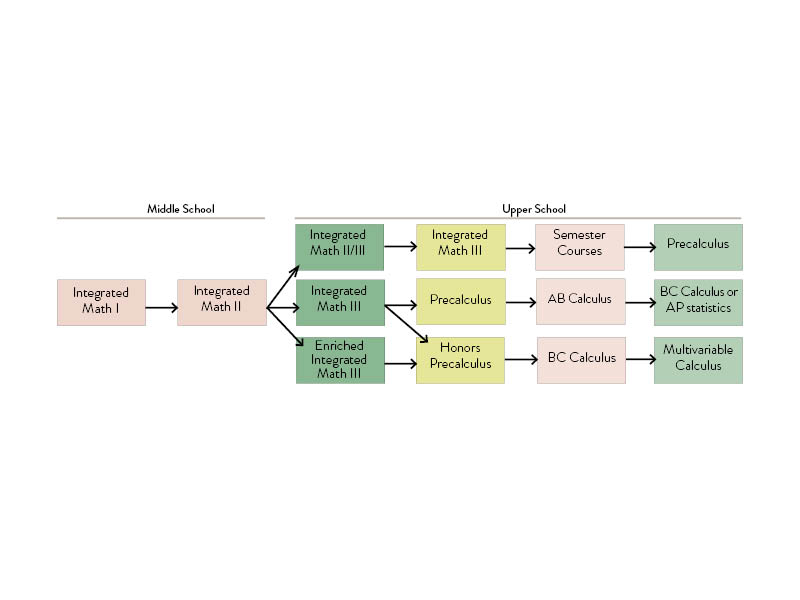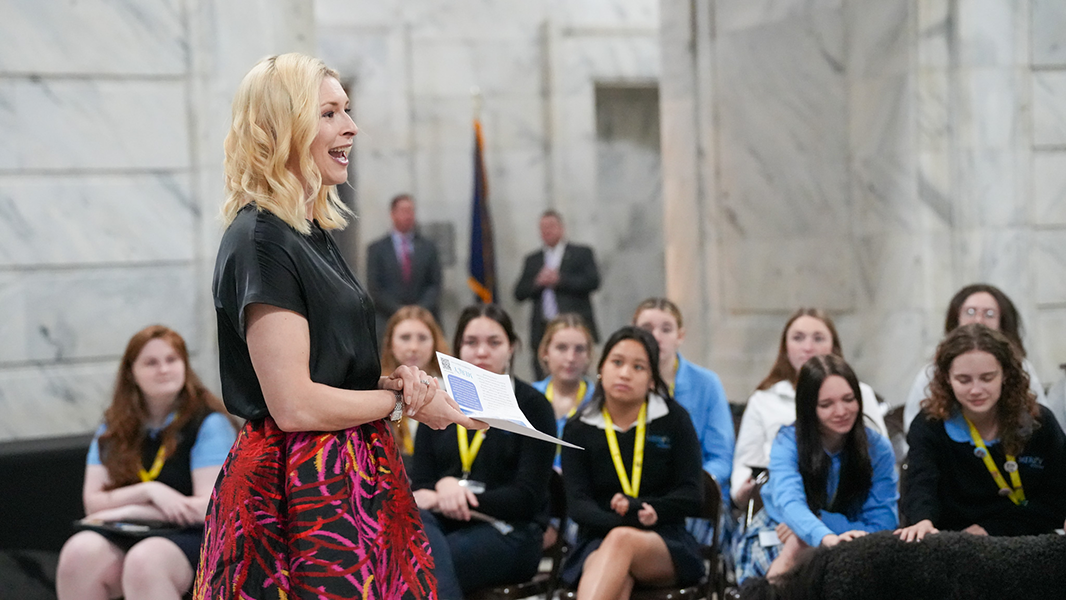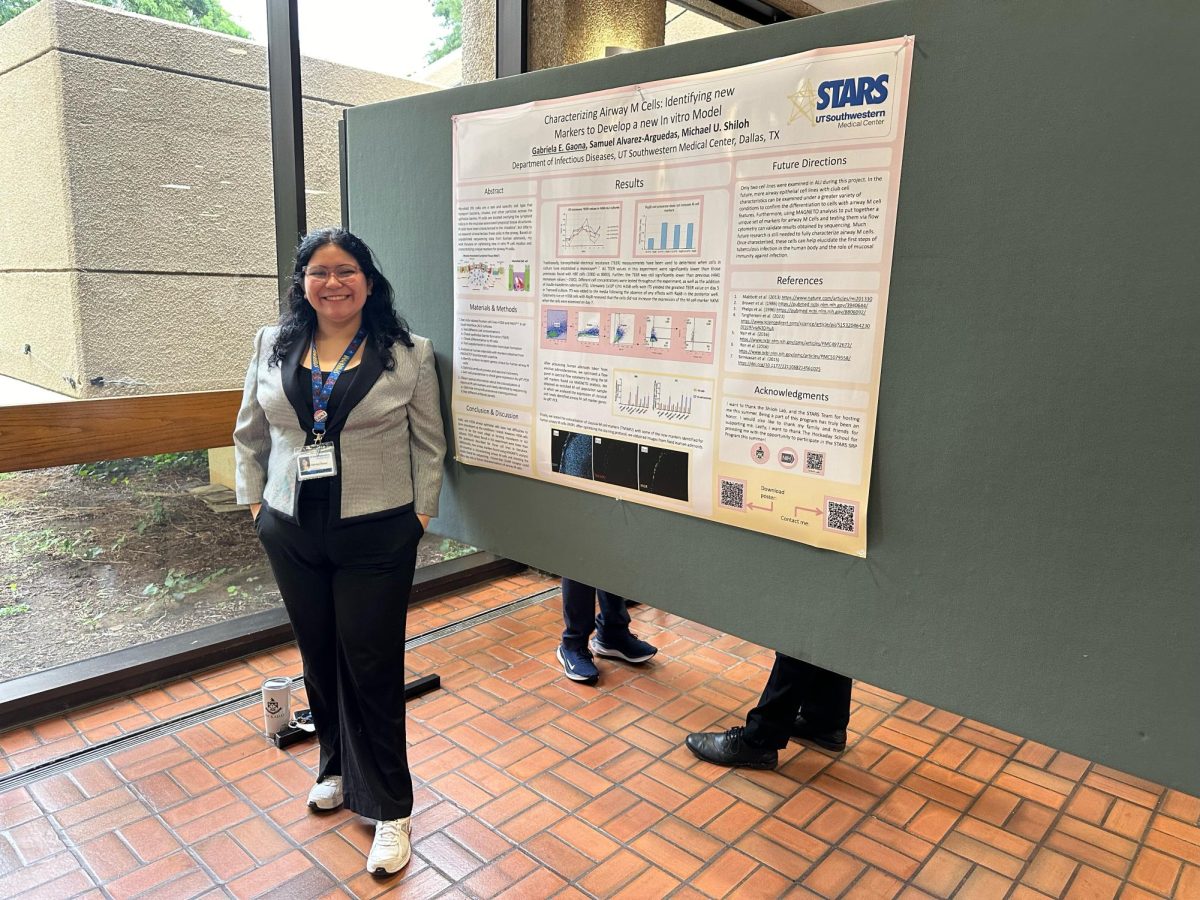
Hockaday adopts integrated math curriculum to provide more opportunities for students
For over 30 years, the United States has worked to keep its students internationally competitive in mathematics, but the numbers just don’t add up. According to data from the Programme for International Student Assessment, the United States is ranked 25th in the world in mathematics, behind European and Asian countries including the United Kingdom (22nd), South Korea (second) and China (first).
Just this year, the National Governor’s Association and the Council of Chief State School Officers released the Common Core State Standards Initiative, setting a standard math curriculum that very nearly resembles integrated math—algebra and geometry concepts are taught in conjunction.
Thirty-seven states voluntarily adopted the initiative, but Texas was not one of them.
Hockaday, in order to give its students the best mathematical education, is switching from a curriculum in which algebra and geometry are taught separately and implementing a curriculum overhaul using integrated mathematics, starting in Middle School.
The new curriculum follows the model of integrated math programs from schools such as Phillips Exeter Academy in Exeter, NH and those in European and Asian countries.
The purpose of the integrated program is to introduce students to the five branches of math: algebra, geometry, statistics/probability, logical reasoning and discrete topics (integers and graphing), and concurrently so that the topics support each other and increase understanding.
“Most math teachers will tell you that’s the way it is supposed to be done because they all interact like that,” Math Department Chair Jeri Sutton said. “You can make connections better.”
The U.S. is practically the only country in the world that separates Algebra I, Geometry and Algebra II whereas most boarders who come to Hockaday from other countries have already been in an integrated math program.
Sophomore Danielle, a Korean boarder from England, came to Hockaday from an integrated math program and has already mastered algebra and geometry.
“I support [the new curriculum],” Danielle said. “It will make your brain more flexible.”
The program uses a three-textbook series called “The Holt McDougal Integrated Mathematics I, II and III.” From seventh to ninth grades, students complete the series, finishing one volume per year.
Seventh grade math teacher Terry Bourek started teaching the curriculum last year and loves it. “The kids are able to understand the concepts better because it all blends together and the geometry and algebra support each other,” she said.
The topics flow in an unusual way. For example, a unit will start by introducing the topic of direct variation, relationships involving constant ratios, but then move into slope (a ratio of y/x ) and the tangent function (also a ratio of y/x). The correlation between topics, however, makes sense.
Junior Nikita, the incoming Academic Council President, sat in on the meeting when they formally announced the change in the math curriculum. Though she realized the new curriculum’s flow of topics is controversial, she said, “Hockaday has good teachers that will be able to explain it properly, and furthermore, the students are used to the logical process of how concepts build upon each other.
The curriculum accommodates girls of all mathematical abilities. Because students develop academically at different rates, the curriculum offers three levels: concrete, regular and advanced.
“We wanted all girls at the same level to be doing the same math, meeting every students needs with the same concepts,” Sutton said.
Regardless of the levels, the students learn the same concepts but at different paces or with problems of varying degrees of difficulty. This facilitates movement among the levels so that promising young girls will have the opportunity for enrichment when they feel ready for the challenge.
“We did not want to start tracking students in Middle School because they are still developing, and we wanted to keep them on the same course level,” Sutton said.
Eighth grade twins Caroline and Alexandra were part of the first seventh grade class introduced to the integrated mathematics curriculum.
“The seventh grade curriculum was open for other topics that were not in the textbook. We skipped around in the textbook and often reviewed other math concepts that their teacher or class was interested in,” Caroline said.
In eighth grade, they more closely follow the textbook and supplement their lessons with occasional enrichment problems–difficult, higher-level problems on which they spend about half the class period.
“The curriculum was a challenging adjustment because many of the topics are completely new to me,” Alexandra said. Juggling the end-of-year eighth grade exams while trying to retain all of the information she has learned has been a new experience for her.
By the end of the program, students will have completed Algebra I, Geometry and Algebra II in the integrated format. Courses such as AAA Geometry, Algebra II/Precalculus and Calculus and Analytic Geometry will be eliminated beginning with the class of 2016.
“I know [my sister] is going to go through a very different math curriculum than I am,” sophomore Shreya said, a student in Algebra II/Precalculus who has a fifth grade sister.
What used to be taught in four years will now be taught in three years, allowing students to take more calculus courses during their sophomore, junior and senior years.
“It will provide students the opportunities that other students were having,” Sutton said, “they are going to be better problem solvers.”
The students’ earlier exposure to higher level math concepts will also support the science program and bolster the ever-important and growing Science, Technology, Engineering and Mathematics emphasis. Also, because of the way Hockaday has structured the science curriculum (physics, chemistry and biology, in that order), the freshman physics course was challenging as it required a greater knowledge of math than already learned.
“I learned sine and cosine functions in [freshman] physics before I learned them in math,” Nikita said. With the new curriculum, seventh graders are exposed to the basics of trigonometric functions.
“[The new curriculum] will be very positive for the school and the students,” Sutton said. She hopes that Hockaday’s success with the curriculum continues in the Upper School when the Class of 2016 enters as freshmen next year.
– Mary Clare






